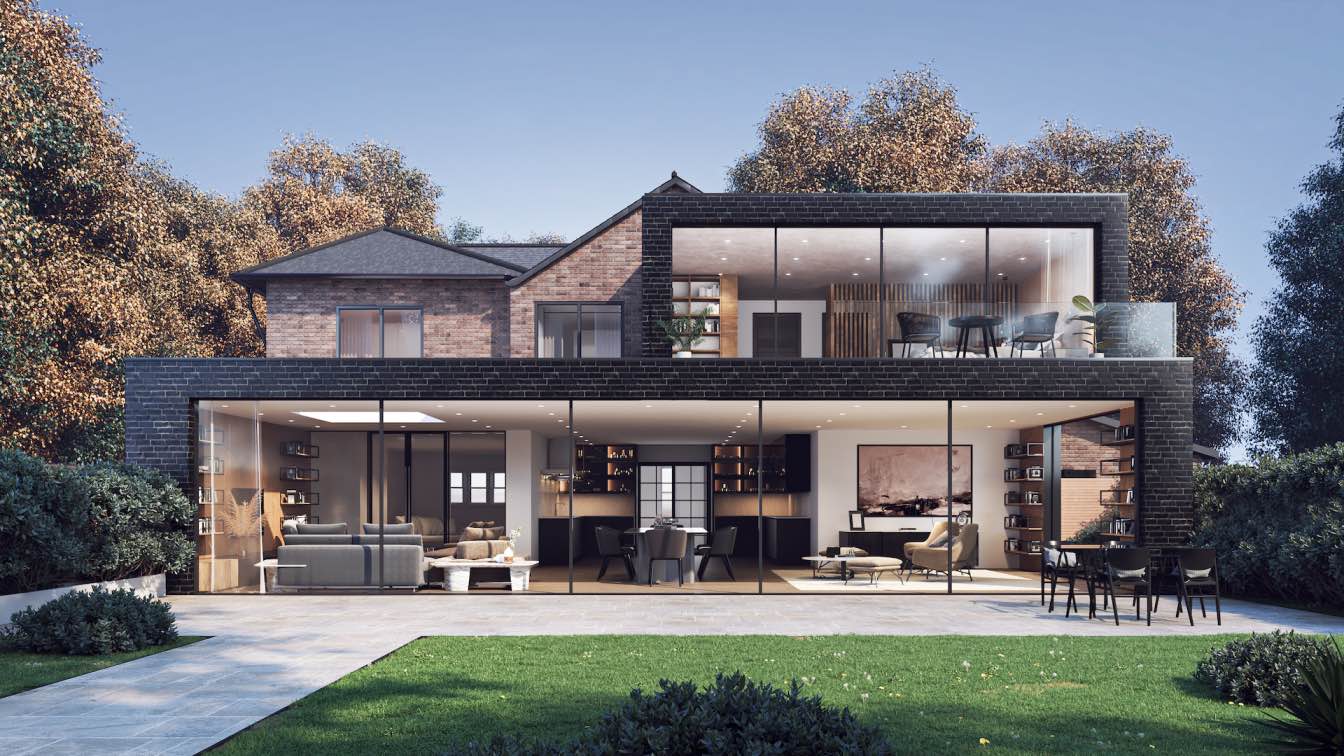Bungalows are a type of residential building that has become synonymous with comfort, simplicity, and charm. With their single-story layout, bungalows offer a unique living experience that prioritizes ease of access, efficient use of space, and a cozy, intimate atmosphere. Whether nestled in suburban neighborhoods or perched in quiet rural areas, the bungalow continues to be a popular choice for homeowners seeking practical yet stylish living spaces.
In this article, we will explore the defining characteristics of bungalow living, its history, the benefits of choosing a bungalow as your home, and the various design elements that make bungalows an ideal choice for single-story comfort.
What is a Bungalow?

A bungalow is a single-story house, typically designed with a low-pitched roof, wide verandas or porches, and a simple, functional floor plan. The term “bungalow” originated in India during the British colonial period, where it was used to describe a small, one-story cottage or dwelling. Over time, this style spread to the West, particularly in the United States and Europe, where it gained popularity in the early 20th century.
In modern times, the bungalow style has become a beloved choice for homeowners who value both aesthetic appeal and practicality. Bungalows are often designed to maximize the use of space without the need for stairs, making them ideal for families, elderly residents, and those who want a low-maintenance, accessible living environment.
Key Features of Bungalow Living
Bungalows are known for their distinctive design features that make them stand out from other architectural styles. Here are some of the key characteristics of bungalow living:
1. Single-Story Layout
The hallmark of bungalow living is its single-story floor plan. This layout provides easy accessibility to all rooms without the need for stairs, which is particularly appealing to individuals with mobility issues, families with young children, or those looking for a more convenient and efficient living space.
2. Open Floor Plan
Many bungalows feature an open floor plan that creates a sense of space and flow throughout the home. The kitchen, dining, and living areas are often designed to be part of one large, open space, allowing for easier interaction and movement between rooms. This layout is ideal for those who enjoy entertaining guests and prefer a more communal living environment.
3. Wide Porches and Verandas
Bungalows often feature expansive porches or verandas, which add a sense of charm and relaxation to the exterior. These outdoor spaces provide a comfortable area for sitting, reading, or enjoying the surrounding landscape. A wide porch also enhances the bungalow’s welcoming and homey feel, inviting relaxation and connection with nature.
4. Low-Pitched Roof
The roof of a bungalow is typically low-pitched or gabled, giving the house a grounded and cozy appearance. The roofline contributes to the overall compact and efficient design, which is often one of the key selling points of bungalow homes.
5. Large Windows and Natural Light
Bungalows often feature large windows that allow natural light to flood the interior. This creates a bright and airy living space that feels open and connected to the outdoors. Many bungalows have strategically placed windows to provide views of gardens, patios, or surrounding natural landscapes, enhancing the home’s connection to its environment.
6. Cozy, Efficient Interiors
Inside a bungalow, the spaces are designed to be cozy and efficient, making the most out of the square footage. Rooms tend to be intimate, with functional layouts that prioritize comfort over excess. Bungalows are often perfect for smaller families or individuals looking for low-maintenance living without sacrificing style.
Benefits of Bungalow Living
Bungalows offer several advantages that make them an appealing choice for a variety of homeowners. Some of the primary benefits include:
1. Accessibility and Convenience
Since bungalows are one-story homes, there are no stairs to climb, making them an excellent choice for individuals with mobility challenges, the elderly, or young children. The absence of stairs also means fewer fall hazards and easier accessibility to every room, making the home more practical for people of all ages.
2. Low Maintenance
With no upper levels to worry about, bungalows typically require less maintenance than multi-story homes. Exterior upkeep, such as cleaning gutters or painting, is easier to handle on a single level. This makes bungalows a convenient choice for homeowners who want to spend less time on home maintenance and more time enjoying their living space.
3. Energy Efficiency
Bungalows tend to have smaller footprints than multi-story homes, which can make them more energy-efficient. Heating and cooling costs are generally lower, as there is less space to regulate temperature. Additionally, the open floor plan design can facilitate better airflow, further improving energy efficiency.
4. Better Flow and Open Space
Many bungalows have open floor plans that allow for better circulation and a more spacious feeling, even if the home is relatively small. The layout creates an inviting atmosphere where rooms naturally flow into one another, fostering a sense of openness and making the space feel larger than it actually is.
5. Close Connection to the Outdoors
Bungalows typically emphasize outdoor living with features such as porches, patios, and gardens. This makes them ideal for homeowners who enjoy spending time outside and prefer to have easy access to their outdoor spaces. The integration of large windows and doors that open to the garden or yard enhances the overall connection with nature.
Design Ideas for Bungalow Living
While bungalows are often associated with simplicity and functionality, they can be designed to reflect a variety of styles, from traditional to modern. Here are some design ideas to consider when creating or renovating a bungalow:
1. Open Concept Living
To make the most of the bungalow’s natural flow, consider designing an open concept living space. This can include combining the kitchen, dining, and living areas into one large, continuous space. Use light colors and furniture that matches the flow of the home to create a cohesive feel.
2. Maximize Outdoor Living
Create an outdoor space that complements the cozy atmosphere of the bungalow. Add a spacious deck or patio with comfortable seating, or even include a small garden or vegetable patch to enhance the bungalow’s connection to nature.
3. Use Natural Materials
Incorporating natural materials, such as wood, stone, and brick, can enhance the bungalow’s rustic and charming feel. These materials can be used both inside and outside, contributing to the overall warmth and coziness of the home.
4. Modern Features with Traditional Charm
Many modern bungalows blend traditional elements, like craftsman-style details and wood accents, with contemporary features such as open shelving, minimalist décor, and energy-efficient appliances. This combination creates a balanced look that is both timeless and functional.
5. Built-In Storage
Since space in a bungalow can be limited, built-in storage solutions, such as shelves, cabinets, and hidden storage areas, can help keep the home organized and clutter-free. Consider adding storage under the stairs (if applicable), in built-in benches, or even in the walls.
Conclusion
Bungalow living Residence is an excellent option for homeowners seeking a comfortable, accessible, and charming living space. With their single-story layouts, open floor plans, and close connection to nature, bungalows offer a cozy and efficient way to enjoy modern living while embracing classic architectural style.
Whether you’re a young professional, a growing family, or someone looking for a low-maintenance home in a quiet neighborhood, a bungalow can provide the ideal setting for comfortable and functional living. With thoughtful design choices and an emphasis on simplicity and ease, bungalows continue to stand the test of time as a popular choice for residential living.




